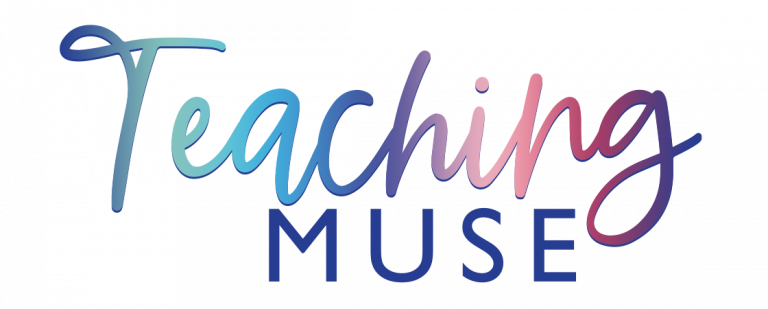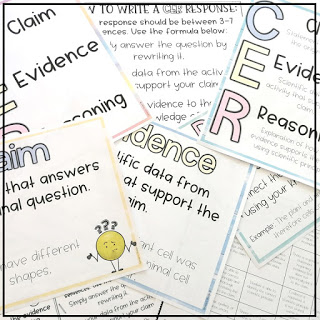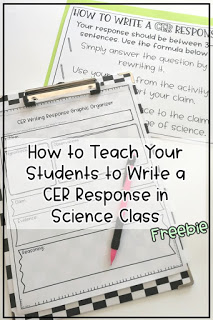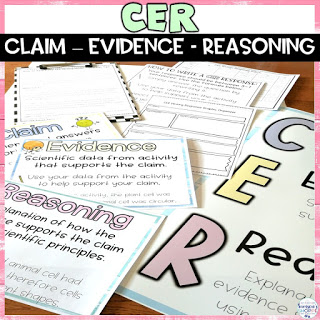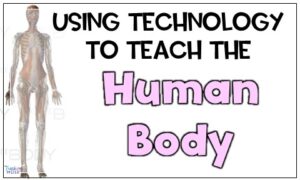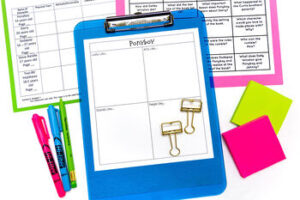As a science teacher with a master’s degree in Literacy, one of my passions is to authentically bring reading and writing skills into the curriculum without compromising the fun, hands-on nature of science. I incorporate these skills through readings to build background knowledge and comprehension of the concept we are learning. I also like to use sketch notes to allow students to summarize and synthesize their learning.
Writing skills have often been neglected when it comes to science until the CER strategy came along. Using this method, I now have a concise way to teach my students how to respond to a topic, give evidence, and tie it to scientific reasoning. Learn what the CER science writing strategy is and how you can easily use it in your classroom today.
What is CER?
CER stands for claim, evidence, reasoning.
Teaching the CER Strategy
Students are given a hands-on activity. Upon completing the activity, they will demonstrate their scientific knowledge, answer the prompt, and incorporate important writing skills also needed in ELA.
Here is an example:
The students are learning about chemical and physical changes. They are working together to complete an activity that determines whether a chemical or physical change is happening. Students complete the experiment and then fill out their sheet using the CER method.
Example student CER writing response:
Claim: Students state whether a chemical or physical change occurred. A chemical change occurred.
Evidence: Students use evidence from the activity to demonstrate that their claim is accurate. Once the glowstick was activated, there was a color change. (Depending on the activity, there may be more evidence to include. More evidence requires another sentence or two to support the claim).
Reasoning: Students will use their scientific reasoning to explain the connection between the claim and evidence. One way to tell if a chemical change occurred is by observing a color change. Therefore when the glowstick was activated, the color change indicates a chemical change.
Better student responses!
Student responses varied between 3-7 sentences using this method.
It cut down on lengthy written work that often didn’t explicitly answer the question being asked.
In some cases, students are writing less, but their writing is more meaningful as it clearly answers the question being asked of them. As a teacher, it allows me to quickly identify who understands the scientific principle we are working on and who needs more assistance. This will enable me to pull small groups together to explain and discuss their thinking.
This method worked with my students because of the formula-like written response. It also doesn’t require an extended response to show their scientific knowledge and thinking. It is clear and concise, and I love how these skills will transfer over into their ELA class when writing their argument essays.
Looking for materials to get started? Join my science squad by adding your first name and email address below and instantly receive a student graphic organizer and CER formula response sheet into your inbox for F-R-E-E!
Suppose you need teacher tips, classroom decor posters, student reference sheets, a graphic organizer, a formula response sheet, and a rubric. In that case, you might want to check out the materials below.
Learn more about CER:
